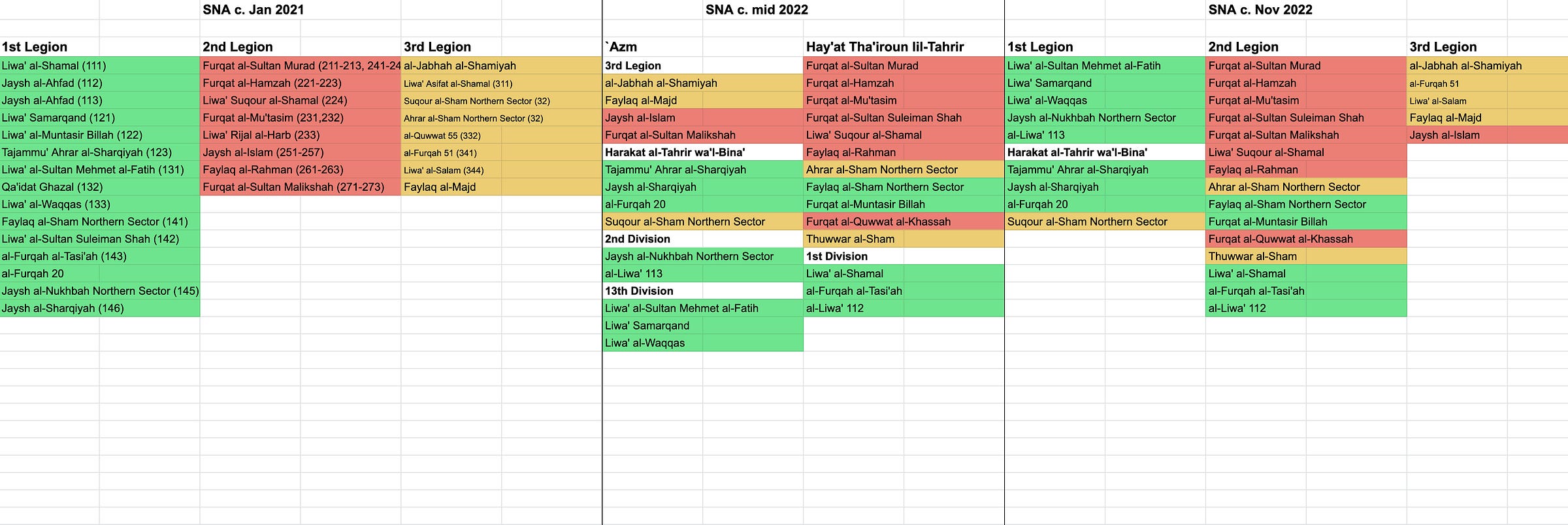Tracking changes in the SNA structure over time
Taking stock of two years of organizational shake ups
Given the recent return of the SNA to the ‘legion’ structure I was curious to see the changes in legion and intra-SNA coalition of the past two years laid out in one place. This chart below is based on research collected since the 2017 creation of the SNA by Aymenn al-Tamimi, Hampton Stall and Hari Prasad at the Carter Center, myself, and others. For expedience sake I rushed the “mid 2022” category a bit so it’s possible that one or two of the affiliations listed are anachronistic but overall I believe this captures the general situation between spring and the recent HTS incursion into Afrin.
Below I’ve color coded the faction names by which legion they initially belonged to. Here it becomes clear that the original First Legion (the weakest of the three) has been split, with those that were part of the Tha’iroun alliance now having joined the Second Legion. The most important shifts in allegiances have arguably been Jaysh al-Islam joining of the Third Legion alongside al-Jabhah al-Shamiyah, and the defection of Ahrar al-Sham’s Northern Sector from al-Jabhah al-Shamiyah to the Tha’iroun/Second Legion bloc. This later faction has been at the center of this years intra-SNA conflict, siding with HTS against al-Jabhah al-Shamiyah in both June and October.
The only other difference of note between now and early 2021 is that Suqour al-Sham’s Northern Sector left al-Jabhah al-Shamiyah/the Third Legion to form Harakat al-Tahrir wa’l-Bina’ alongside the three “eastern" factions: Ahrar al-Sharqiyah, Jaysh al-Sharqiyah, and al-Furqah 20.
It remains to be seen whether this current organizational structure and the broader reforms reportedly imposed by Turkey hold. However, continued movement makes it clear that the SNA is still quite resistant to proper institutionalization.


